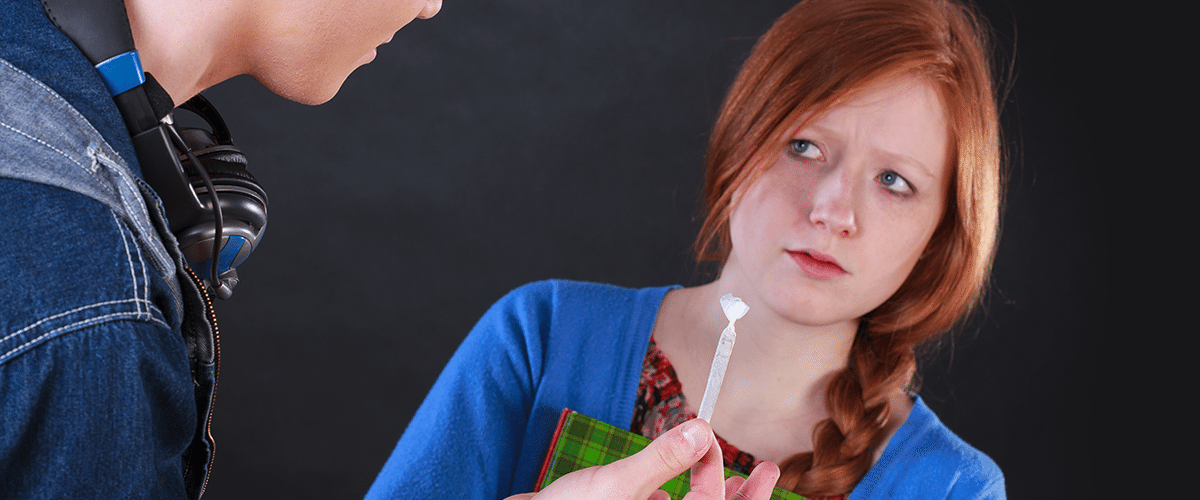[vc_row][vc_column][vc_column_text]
This year’s Monitoring the Future survey shows that marijuana legalization does not lead to increased marijuana use among teens.
As marijuana legalization expands throughout the United States, marijuana use by teens has either remained stable or decreased, according to the latest results of an annual survey from the National Institutes of Health.
The 2016 Monitoring the Future (MTF) annual survey continued to show a long-term decline in marijuana, alcohol, tobacco and prescription medication use among teens. Among eighth graders, marijuana use in the past month dropped significantly from 6.5 percent in 2015 to 5.4 percent in 2016. Daily use among eighth graders also dropped to 0.7 percent this year, down from 1.1 percent last year. Rates of marijuana use in the past year among 10th graders and high school seniors remained stable compared to 2015.
“I don’t have an explanation,” Dr. Nora Volkow, director of the National Institute on Drug Abuse, told U.S. News. “This is somewhat surprising. We had predicted – based on the changes in legalization, culture in the U.S., as well as decreasing perceptions among teenagers that marijuana was harmful – that [accessibility and use] would go up. But it hasn’t gone up.”
In the U.S., eight states have legalized recreational marijuana and 28 states have passed comprehensive medical marijuana legislation. This past November, eight states passed marijuana measures. The expansion of legalization has shown to have either positive or no impact on marijuana use by adolescents in several studies.
“Every time a state considers rolling back marijuana prohibition, opponents predict it will result in more teen use,” said Marijuana Policy Project’s Mason Tvert, in a statement. “Yet the data seems to tell a very different story. There has been a sea change in state marijuana laws over the past six years and teen usage rates have remained stable and even gone down in some cases.”[/vc_column_text][/vc_column][/vc_row][vc_row][vc_column][vc_single_image image=”17313″ img_size=”1200×250″ onclick=”custom_link” img_link_target=”_blank” link=”https://www.medicalmarijuanainc.com/overview-of-u-s-medical-marijuana-law/”][/vc_column][/vc_row][vc_row][vc_column][vc_column_text]The MTF survey is the only large-scale federal youth survey on substance use. Since 1975, its been conducted by researchers at the University of Michigan at Ann Arbor. This year’s survey included 45,473 students from 372 public and private schools.
Other marijuana-related highlights from the survey:
- Marijuana use in the past year among eighth graders dropped significantly in 2016 to 9.4 percent, from 11.8 percent in 2015. These rates are now at their lowest levels in over two decades.
- Rates of use among 12th graders were found to be higher in states with medical marijuana laws (38.3 percent) than states without legislation (33.3 percent). However previous studies show that the rates of use were higher prior to the passing of the laws.
- Students’ perception of risk surrounding marijuana remained relatively stable from 2015 to 2016.
“The best way to prevent teen marijuana use is education and regulation, not arresting responsible adult consumers and depriving sick people of medical marijuana. It is time to adopt marijuana policies that are based on evidence instead of fear,” Tvert added.
The survey also found that the number of eighth graders who responded that marijuana is easy to acquire (34.6 percent) is at its lowest in the history of the survey.
“We’ve always argued that taking marijuana out of the unregulated criminal market and putting sales into the hands of responsible retailers would actually make it harder for young people to get,” said Tom Angell, chairman of the pro-legalization group Marijuana Majority, told Merry Jane. “The new data bear this out, and it’s just common sense.”
You can read through all of the data collected and findings from the 2016 MTF annual survey here.[/vc_column_text][/vc_column][/vc_row]






